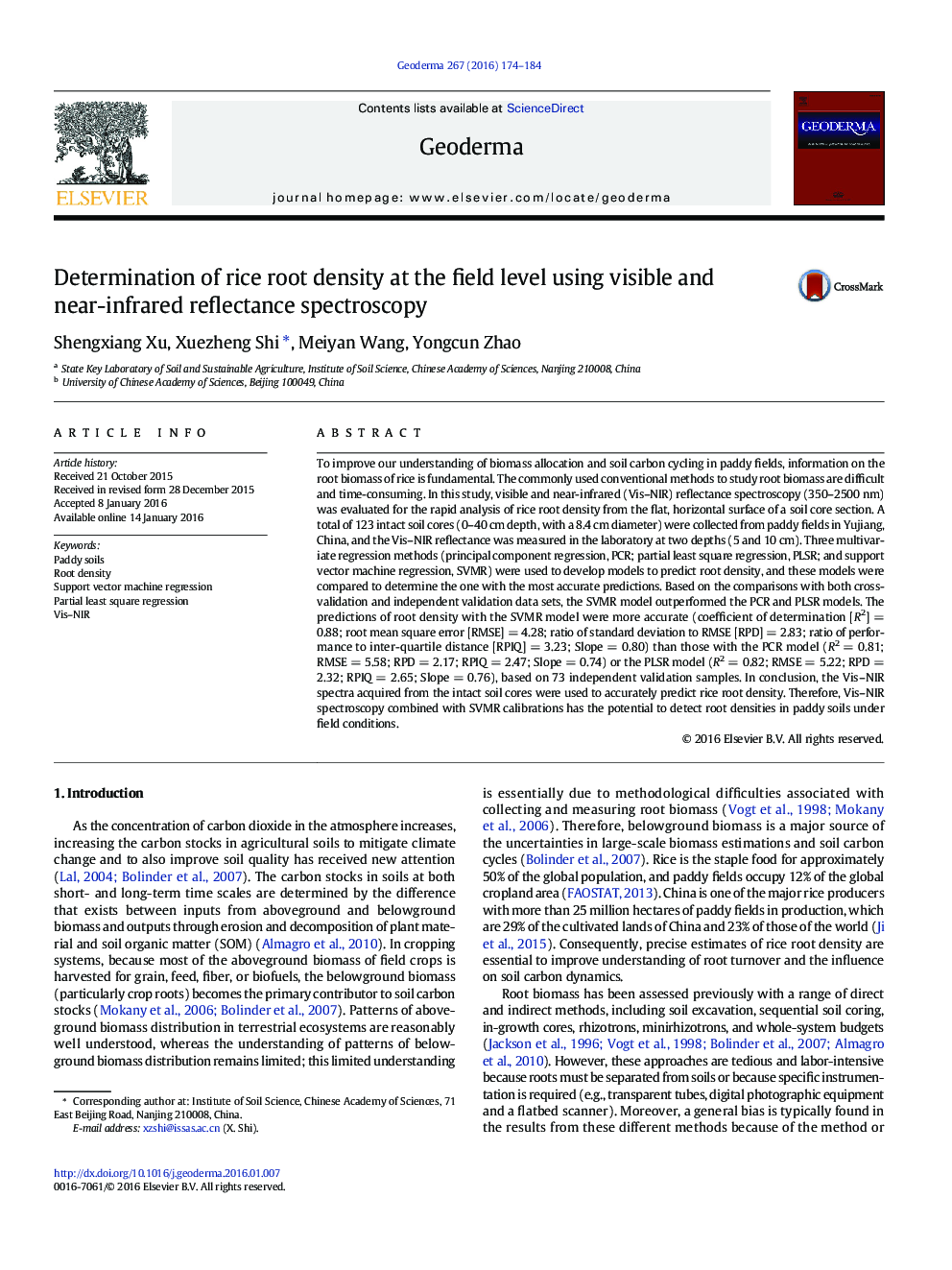| کد مقاله | کد نشریه | سال انتشار | مقاله انگلیسی | نسخه تمام متن |
|---|---|---|---|---|
| 6408386 | 1629450 | 2016 | 11 صفحه PDF | دانلود رایگان |
- Laboratory-based Vis-NIR spectroscopy was used to determine rice root density.
- PCR, PLSR and SVMR were used to develop models to predict root density.
- The SVMR model outperformed the PCR and PLSR models.
- SVMR model demonstrated good performance (R2Â =Â 0.88; RMSEÂ =Â 4.28; RPDÂ =Â 2.83).
- Vis-NIR spectra from intact soil cores can accurately predict rice root density.
To improve our understanding of biomass allocation and soil carbon cycling in paddy fields, information on the root biomass of rice is fundamental. The commonly used conventional methods to study root biomass are difficult and time-consuming. In this study, visible and near-infrared (Vis-NIR) reflectance spectroscopy (350-2500 nm) was evaluated for the rapid analysis of rice root density from the flat, horizontal surface of a soil core section. A total of 123 intact soil cores (0-40 cm depth, with a 8.4 cm diameter) were collected from paddy fields in Yujiang, China, and the Vis-NIR reflectance was measured in the laboratory at two depths (5 and 10 cm). Three multivariate regression methods (principal component regression, PCR; partial least square regression, PLSR; and support vector machine regression, SVMR) were used to develop models to predict root density, and these models were compared to determine the one with the most accurate predictions. Based on the comparisons with both cross-validation and independent validation data sets, the SVMR model outperformed the PCR and PLSR models. The predictions of root density with the SVMR model were more accurate (coefficient of determination [R2] = 0.88; root mean square error [RMSE] = 4.28; ratio of standard deviation to RMSE [RPD] = 2.83; ratio of performance to inter-quartile distance [RPIQ] = 3.23; Slope = 0.80) than those with the PCR model (R2 = 0.81; RMSE = 5.58; RPD = 2.17; RPIQ = 2.47; Slope = 0.74) or the PLSR model (R2 = 0.82; RMSE = 5.22; RPD = 2.32; RPIQ = 2.65; Slope = 0.76), based on 73 independent validation samples. In conclusion, the Vis-NIR spectra acquired from the intact soil cores were used to accurately predict rice root density. Therefore, Vis-NIR spectroscopy combined with SVMR calibrations has the potential to detect root densities in paddy soils under field conditions.
Journal: Geoderma - Volume 267, 1 April 2016, Pages 174-184
